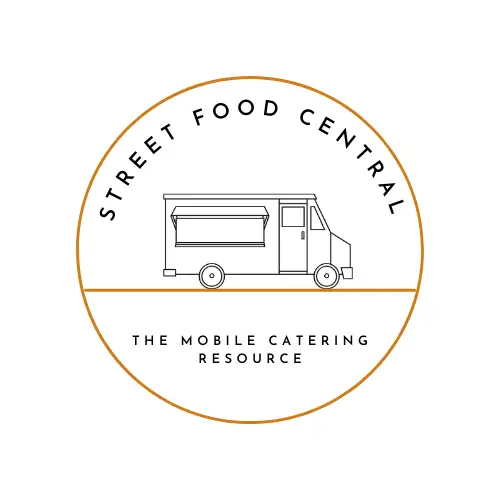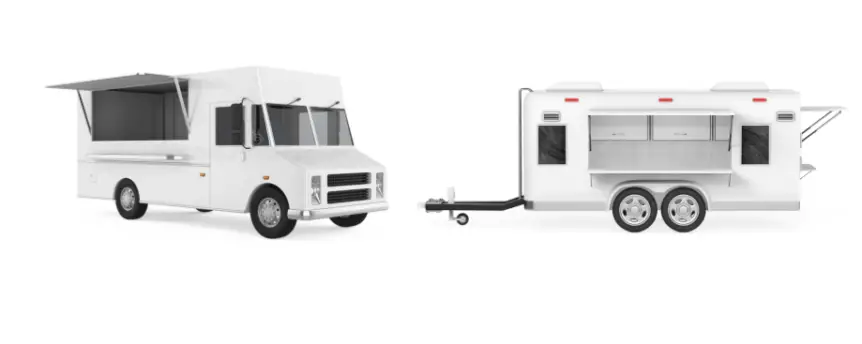Check out the pros & cons of food trucks, trailers, and stalls to decide which is your best option
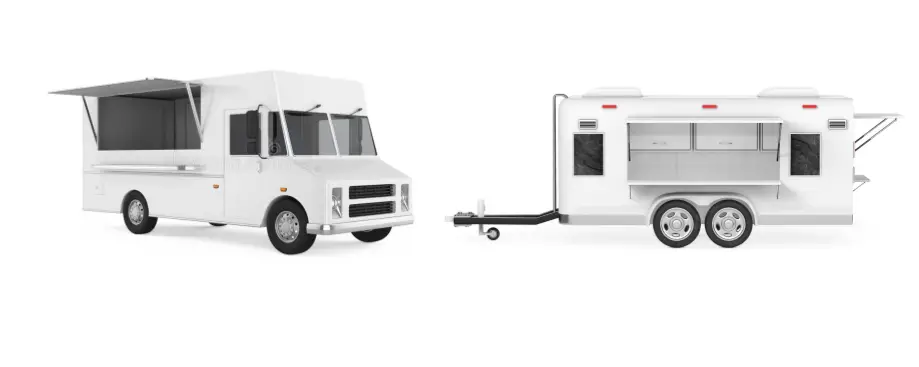
Mobile catering units come in a wide range of styles and designs, and the most common are converted food trucks such as Citroen and Ford Step Vans, custom-built food trailers, and even pop-up gazebos, and they all have their pros and cons.
Food trucks are very mobile but are more expensive to maintain, while food trailers tend to offer more space but are harder to transport. Pop-up gazebos, on the other hand, are very affordable and good for getting started in the mobile catering industry but can be prone to damage.
Choosing either a food truck or trailer will largely depend on the size of your budget, your experience, and your business needs and objectives. In short, trailers are cheaper, but eventually cost you more in time spent and other hassles.
In this article, I will go through all the pros and cons of food trucks, trailers, and stands to give you an idea of which one is right for you.
Food trucks

Food trucks are mobile kitchens on wheels and are usually converted from a wide range of old commercial vehicles, such as American Ford Step Vans and French H vans. They offer a wide range of benefits that other types of mobile catering units don’t. But they also have their drawbacks.
Pros:
- Mobility – A food truck’s ability to move to multiple sites is one of its key advantages. For instance, a food truck can park in the downtown area at lunchtime to serve office workers and then move to a different spot at night. Food trucks also eliminate the need for towing saving time on setting up and packing away
- Visibility – Because food trucks can be moved around to different locations with relative ease it means that more people will see you thus increasing brand exposure
- Size – Food trucks tend to be smaller than other types of mobile catering units and on average are around 7 feet wide, while a food trailer, measures on average between 7 feet and 8.5 feet. This means food trucks can get into smaller spaces such as tight back roads and are easier to park
- Brand exposure – Food trucks can be very eye-catching, especially when they have been converted from vintage vehicles such as Citreon H Vans which makes them highly brandable and good for creating brand exposure. They are also converted to a very high standard
Cons:
- Relatively expensive – In comparison to other types of units such as food trailers and food stalls, food trucks are probably the most expensive type of unit and can range between $30,000 to $70,000 for a used model. This is because food trucks often have to be converted from their original intended use, and when it comes to converting vintage models it comes with a cost.
- Mechanical failure – Food trucks have moving parts such as an engine which means not only do you have to maintain your catering equipment but also its ability to move. This means food trucks can be prone to breaking down which is something you really don’t need, especially if you are on your way to a big event. Engine failure can be a reoccurring issue, especially with older vintage models such as Citreon H-Vans
- Limited space – As I mentioned above food trucks are smaller than food trailers which means less space in the kitchen for catering equipment, stocks, and the ability for staff to move around. This means it can impede your ability to scale up your operation and serve large amounts of people are larger events. However, traders often get around this by having pop-up gazebos to increase space
- Maintenance costs – Having an engine means the maintenance costs for a food truck will be higher than a food trailer. This is because you not only have to maintain your commercial catering equipment but also have to pay for things like regular engine service and pay to get it back on the road when things break down.
- Storage costs – You can just leave a food truck on the side of a public road. This is because there are zoning laws in many states which limit large vehicles parking on public roads. In addition, leaving a food truck on a public road makes it prone to damage and theft. This means you will need to find a place to store it overnight in an enclosed area which also comes with an additional cost.
Key Facts: Food trucks
- Costs – Used between $30,000 – $70,000 / New between $50,000 – $175,000
- Average dimensions – 7 feet wide / 10 – 26 ft long
- Vehicle models – Citroen H-Vans, Ford Step Vans, VW Beetle, School buses
Related article:
- What Insurance Does A Food Truck Need In The UK?
- 12 Types of Vehicles Used for Food Trucks
- 8 Avoidable Reasons Why Food Truck Businesses Fail
Food trailers
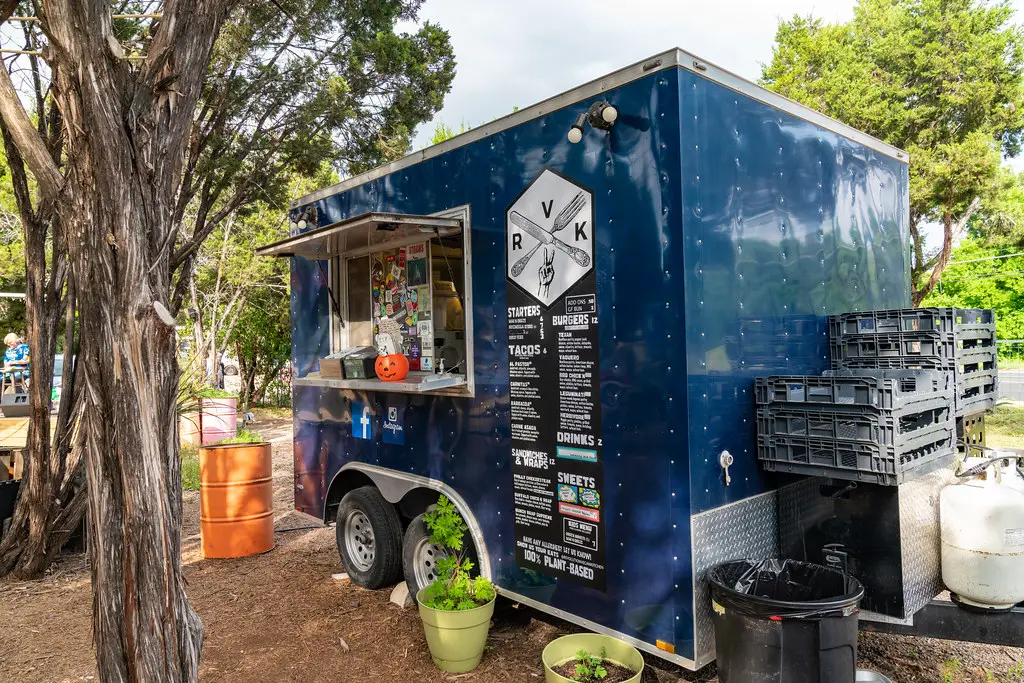
Food trailers are typically custom-built from their inception for commercial catering, as opposed to converting a vehicle that had a different use into a food truck. Some exceptions include Airstream trailers, which started as mobile homes and were later converted into food trailers due to their eye-catching design.
Food trailers offer a number of benefits over food trucks, but they also have some drawbacks.
Pros:
- Relatively cheap – In general both new and used food trailers are more affordable than food trucks because the production costs are lower and there aren’t any additional moving parts such as an engine. Depreciation costs will also be lower over time because you only need to maintain the catering equipment inside the trailer. However, you will need a vehicle to tow it especially if you intend to be a mobile business.
- More space – Food trailers are often built to a specification, meaning you can order one as small or as large (within reason) as you like. Some food trailers are as long as 50 feet or more. This means there is more room for storage, food preparation, and production and more staff members, thus increasing your capacity to serve larger crowds.
- Highly customizable – Aside from being able to specify the dimensions of a food trailer you can also specify how the branding van looks with things like banners and how things are built inside. This is very useful if you have a particular layout and the type/size of equipment in mind.
Cons:
- Mobility – Unlike food trucks, Food trailers do not have engines which means they need to be towed from A to B. This means you have to hitch, move, and unhitch the trailer to another vehicle every time you want to move to another location. Reverse parking can also be an absolute nightmare, which some traders (including me) can attest to.
- Storage costs – Like a food truck, you can’t leave a food trailer on the side of the road for safety and legal reasons which means food trailers need to be stored in a safe and secure place. Again this is going to incur additional costs which you need to factor into your operating costs.
- Set-up & Breakdown – Food trailers can take more time and effort to both set up and breakdown than food trucks as it takes additional time to maneuver the trailer into a space, unhitch it and then hitch it onto a vehicle and maneuver it out of three spaces when you leave.
Key Facts: Food trailers
- Costs – Used between $10,000 – $25,000 / New between $40,000 – $60,000
- Average dimensions – 8ft – 53 ft long / 7-8.5 ft wide
- Models – Custom Built, Airstreams
Related articles:
- Where To Find Used Food Trucks For Sale
- Food Trucks Vs. Restaurants: 8 Reasons Food Trucks Are Better
Food stalls
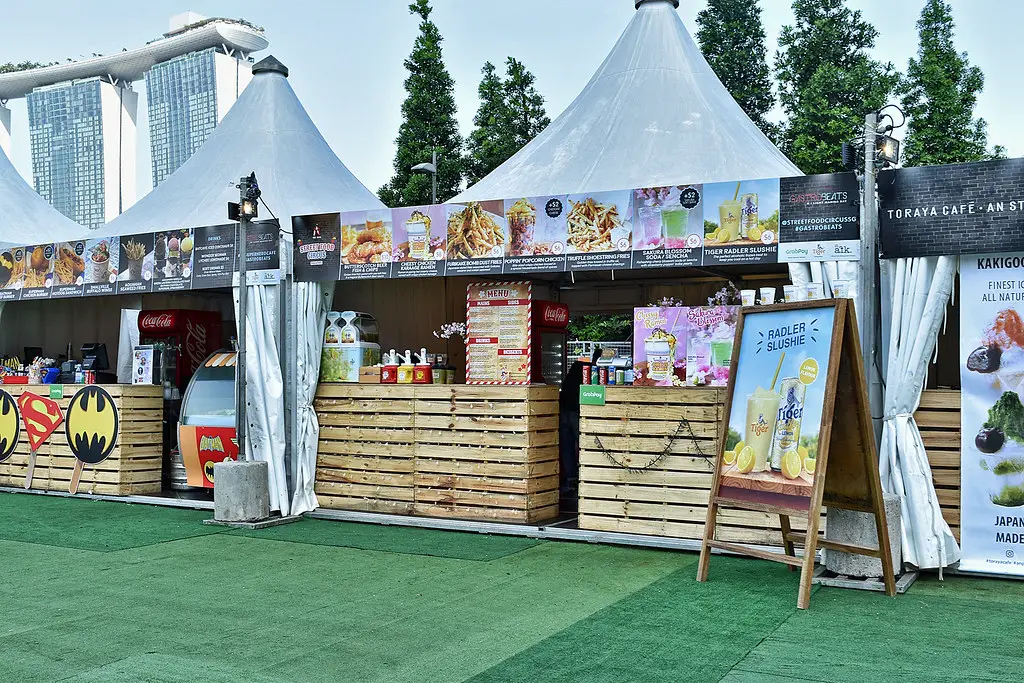
I don’t think we can discuss food trucks without mentioning food trailers. For those who are not familiar, food stalls are mobile kitchens that operate under a pop-up gazebo and can be seen at food markets in many towns and cities.
They are significantly cheaper than both food trucks and trailers and come with a range of additional benefits. And like food trucks and trailers, they also have their drawbacks.
Pros:
- Affordable – In comparison to food trucks and trailers, pop-up gazebos are a much more cost-effective solution to getting started in the mobile catering industry. Commercial gazebos can be brought brand in for as little as $500 and is a good way to test the market with your products, especially when you are just starting out.
- Easy to store – Pop-up gazebos are designed to be portable and easy to store which means you don’t have to find large overnight storage units and you do for food trucks and trailers. A gazebo can be stored relatively easily in the back of a van or in a garage at home.
- Very low maintenance cost – Pop-up gazebos don’t have the maintenance costs that are associated with trucks and trailers and can last a good 5 years if you get a good commercial-grade model. And because they are so affordable when they do break, replacing them is the same cost as replacing a piece of catering equipment.
- Space – Pop-up gazebos come in a range of sizes from 2.5 x 2.5 meters all the way up to 3 x 6 meters, which gives you a lot of space for staff, stock, and equipment. You can also add extra space and double your operation by placing gazebos side by side.
Cons:
- Longer set-up – One of the main drawbacks of pop-up gazebos is that they take much longer to set up and pack away than food trucks and trailers. You not only have to set up the gazebo but you also have to erect a whole portable kitchen inside which means carrying equipment back and forth from your van.
- Less sturdy– Pop-up gazebos are temporary structures, made of relatively light-weight material, which means they are less sturdy than the other types of catering units and are prone to damage, especially in very windy conditions. It can also be difficult to set up on uneven surfaces.
- Not as professional – Gazebos are not as professional looking as food trucks and trailers and can look a bit tired, especially if they are a few years old and haven’t been maintained. They are also very hard to clean and you may need to find a specialist company to clean them.
Key Facts: Food trailers
- Costs – Used between $100 – $500 / New between $300 – $2000
- Dimensions – 2.5 x 2.5 metres – 3 x 6 metres
- Brands – Custom Tents,
Related articles:
Key takeaways
Food trucks, trailers, and stalls all have their benefits and drawbacks, and things like budget and needs will determine which one you choose.
Food trucks are more mobile and can go from location to location with relative ease, saving time on set-up. They are also eye-catching, which can help with brand exposure. However, they are relatively expensive to buy and maintain.
Food trailers, in comparison, are more affordable and offer more space for equipment and stock, which means you can cater to more people. On the other hand, they are not as mobile and can be more time-consuming to set up.
Pop-up gazebos are the most cost-effective type of mobile catering unit, which means you can get started and test your product relatively quickly. They are also very easy to store, which helps cut back on storage costs. However, they are prone to damage and do not look as professional.
If I were just starting out and on a small budget, I would personally go for a food
Gavin D is the founder of Street Food Central and Tru Foo Juice Bar Co. and has worked in the mobile catering industry for over 7 years.
